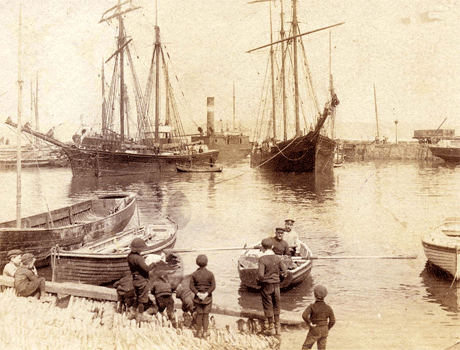Like so many of Cornwall’s coastal towns tales of the daring exploits of their seafaring men are part of Padstow’s historic narrative. Its intrinsic ties to the sea mean that at one time everyone in the town had a maritime connection of some kind, whether that was to fishermen, sailors or smugglers, and Padstow was proud of them all.
The history of smuggling in Cornwall is a long and tangled one which can be traced back to at least the 13th century. The men and women involved in ‘free trading’ as it was called were often seen as ‘heroes’ within their local community. St Ives, Newquay and Padstow were the main smuggling centres on Cornwall’s north coast and Padstow’s smugglers in particular were famed for their daring and ingenuity. The penalties for being caught had been becoming more and more severe over the years until the death penalty was finally introduced in the early 18th century, so the risks these men were taking were very real.
Smugglers inventiveness
Smugglers and their families had to come up with inventive ways to hide their illegal goods from the customs men. One trick supposedly employed by a Padstow farmer was to hide contraband beneath his gateposts. On another occasion smuggled imports were squirreled away in the bedroom of a woman in labour in the town, the doctor, probably in on the ruse, refused the revenue men entry. At Treyarnon Bay there was said to have been a storage place cut into the cliffs, the cave had two entrances, one part way up the cliff face and the other at the top.
Another method of hiding smuggled goods, used throughout Cornwall, was known as ‘sinking’. This involved strings of weighted kegs being sunk beneath the surface offshore. Unfortunately, Padstow was not the ideal place for this particular trick as the rough seas would often set the kegs adrift. In the spring of 1817, some thirty-six barrels of spirits were found floating near Padstow and seized by customs.
Audacious behaviour
A good example of the audacious behaviour demonstrated by the Padstow smugglers occurred in November 1820. A large smuggling vessel landed 500 tubs of spirits on a beach near Padstow and although the crew escaped the contraband was seized by the Boscastle Preventative Service. The smugglers however were not happy with this outcome and in the dead of night they took the goods back and not only that they also stole the Preventative boat to add insult to injury.
On an early occasion in August 1791 the Exeter Flying Post reported that the Dolphin Revenue Cutter had confronted a suspicious lugger off Padstow. Without warning the smugglers fired on the revenue men and demanded that the Dolphin’s mate, Mr Osmond, come aboard. The paper reported that he did so and found the boat had 50 well-armed men and eight cannons. What happened next isn’t clear but it seems that the smugglers were allowed to go about their business, although a reward was later offered for their arrest!
Another popular local legend has it that one of the smuggler’s ships actually chased the Excise boat into Padstow harbour before raised a triumphant flag and sailing off to Newquay!

